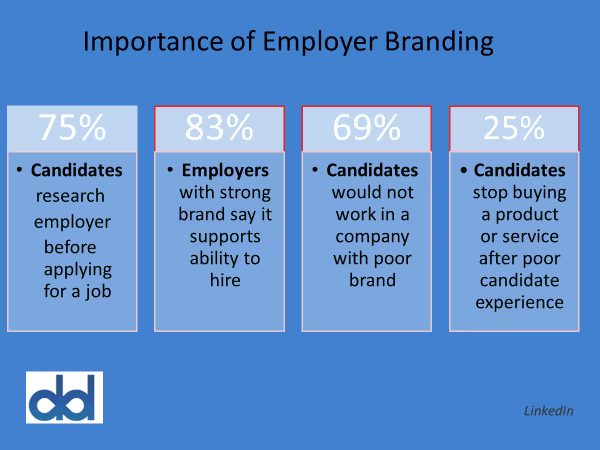In candidate driven markets, hiring managers are the sellers
For years the recruitment process has been powered by companies in the happy position of being in the driving seat. Things have changed in today’s candidate driven market. In a supply driven market, companies posted ads, shortlisted some candidates, putting them through rigorous interviews and not always necessary testing processes, which could take up to 40 hours of a candidate’s time as they jumped through the required hoops.
The hiring manager would make a decision followed up by an offer. A salary would be negotiated, not always to the candidates expectations and they would start their job in due course. Unsuccessful candidates may or may not hear back depending on the company, even with automated systems. Feedback was frequently difficult to obtain. But in a buyer’s market, hiring managers didn’t pay that much attention. They didn’t need to.
Now they do. The boot is on the other foot. Hiring managers, more than ever, are now the “sellers” in the recruitment process. It was of course always there to some degree, but now it has intensified.
Candidate driven market
A candidate recruitment driven market means that for companies the competition to attract top talent has heated up. A period of high employment, means a supply driven market is giving us a role reversal. Candidates of every calibre are able to move easily between jobs. Top talent is so much in so demand they don’t even bother to respond to contact. Some have switched off all notifications including access to LinkedIn InMail. In the days of GDPR this is frequently one of the few ways of reaching any potential candidate.
Those who do engage could be involved in multiple processes and take their time to pick the best offer. This is now known as “benching.” Some candidates let organisations know but others simply disappear and “ghost.” Tinder for talent is real! Colleagues report candidates even failing to appear on the assigned starting day. Others leave very quickly, a few weeks into their contracts. Clearly this a breach of legal obligations, but most organisations aren’t going to go to the expense of taking formal action, especially for lower level employees.
The importance of Employer Branding
Research from LinkedIn suggests that 75% of applicants now consider an employer’s brand before considering making a job application. Organizations are spending more time and efforts investing in building employer branding strategies to reflect their vision, values, and culture, going beyond basic compensation and benefits to appeal. There is a growing trend for candidates to factor in social responsibility and sustainability commitments in addition to a company’s business and workplace culture and environment.
Employer branding is more critical than ever.

Hiring managers as sellers
Hiring managers are no longer the “buyers” in the recruitment process but the “sellers.” They have to change their mindsets and get up to speed in their new role. For many this is not coming easily. Sure, the recruitment process has always been about sales, especially for highly sought-after skills or for executive level roles. But for the rest of the market, a soft sales approach had always worked well, and now the tempo has increased. The interview has become pitch time. Everyone involved in the process is now part of a candidate service initiative, where they need to treat candidates like clients or customers. In the past, some organisations typically asked receptionists and everyone involved in the process to rate their interaction with an applicant.
Today, candidates are not only noting how they are treated, they might even share their experience on Glassdoor. A candidate who has a good experience is twice as likely to recommend that company as a potential employer, as well as becoming a customer of that brand’s products, even if they don’t get hired.
The notion of spending time speaking to a passive candidate is a foreign concept to many companies. “Well, they are either interested or they are not” we hear them say. The answer is that yes, they are interested, but it is up to the hiring manager to convince them. The balance has shifted in the selection process. Any interview should always have been a two-way street, but in reality it was oftentimes about the candidate convincing the hiring panel of their suitability. Now, in a candidate driven market or a job seeker's market it’s the interviewers who have to pull out all the stops.
A challenge
Some organisations are struggling with the change. They are still taking their time to communicate, asking candidates for multiple interviews and to attend time-consuming assessment days. The conversion rate for job seeker to firm applicant is at an all time low, except where organisations have a top employer brands. If your organisations reputation is not great than you will suffer. And in the rush to secure talent, it’s easy to overlook crucial vetting steps—like checking the SAM Exclusion List—which helps avoid onboarding individuals or vendors flagged for federal violations or noncompliance.
5 tips to recruit in a candidate driven market
1. Extend your reach
Try extending the reach of your search for talent away from your old tried and tested ways it is crucial in our job seeker's market. Experiment with new channels and company referral schemes. Make this an ongoing process to ensure you have talent always coming through your pipeline. Don’t search only against specific openings as today candidates spend up to two months gathering information before they decide where they want to apply for a job opening. Studies show that candidates may have as many as 15 touch points with your organisation before they are converted to a prospect.
2. Make your job postings real
Frequently job postings are inflated. Stick to key skills and offer to train and develop candidates who may fall short. Hire for potential not just experience. Use storytelling to engage people whether by video, audio links or posts. Use any channel that will help make your employer brand more appealing in line with your target market.
3. Make your processes user-friendly and as short as possible
Many candidates give up with the process if it is complex and takes too long. Tell candidates how long it is going to take in advance, as three-quarters of jobs seekers will want to know. Test your career site yourself and get a feeling for the candidate experience. What is it like to be them?
4. Prompt communication is vital
Rapid turnaround on communication is important with over two-thirds of candidates losing interest if they don’t hear something within 10 working days. I recommend to clients , five days as the optimal communication time, even if it’s to say it’s no news. No news is your bad news.
5. Harness technology
Speed up the process time by tapping into tech. Use bots on your career sites to answer basic screening questions. At a recent conference a show of hands showed a majority would prefer to engage quickly with a chat bot then wait to speak to a person. Use automated interviews for screening basic knowledge and skill questions.
But candidates need to be careful too. Recruitment is closely tied to economic cycles and there are always downturns. There will be a point, maybe soon, when we return to a demand driven market and we will see organisations back in the driving seat.
It’s always best not to close doors.


















































